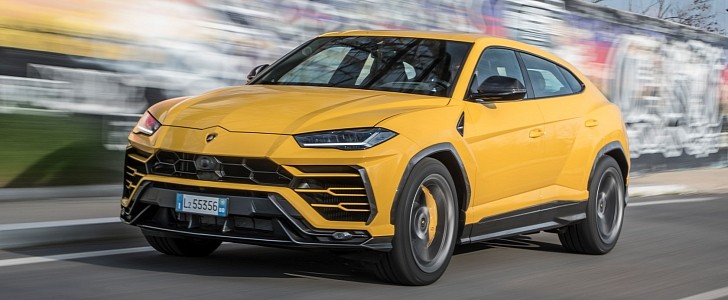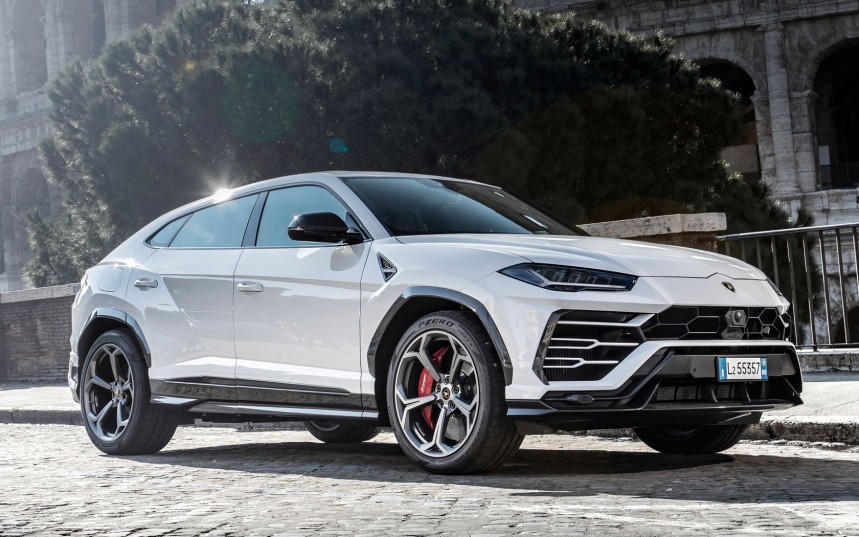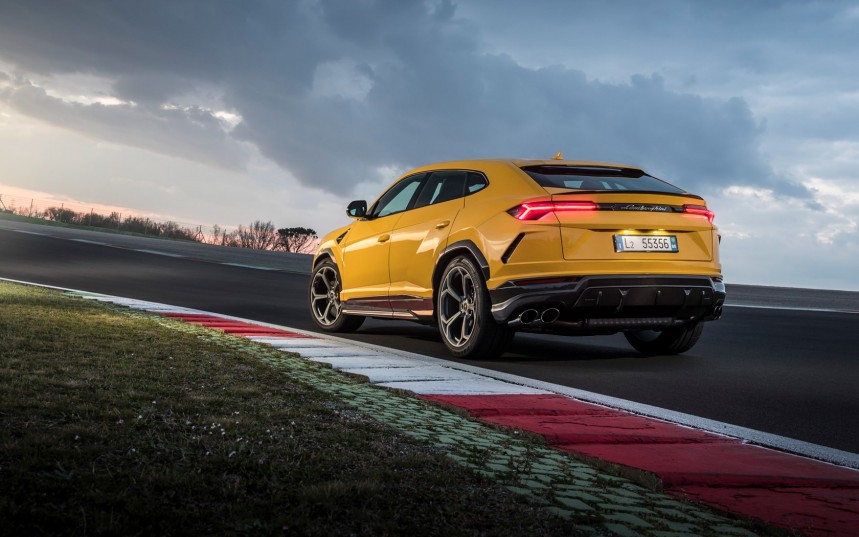The Italian manufacturer joined in the SUV craze by introducing the Urus in 2018 and it quickly became one of the best-selling vehicles of its current range but not every bit of it is developed from the ground up by Lamborghini.
Many have met the Urus with skepticism since it is different than what we usually expect from Lamborghini, but let’s not forget that a V12 engine was taken from the legendary Countach and placed on the monstrous LM002 “Rambo-Lambo,” which was sold by the Italian carmaker from 1986 to 1993.
Unlike its truck predecessor, the Urus does not get to use a current generation of naturally aspirated V10 or V12s developed by Lamborghini but instead gets its power from a 4.0-liter twin-turbocharged TFSI V8 found in other VW Group cars like the Porsche Cayenne, Bentley Continental or many Audi performance models.
It has been heavily redesigned by Lamborghini engineers and is able to produce 641 hp (478 kW; 650 PS), which is 99 hp (100 PS; 74 kW) more than the engine of the Cayenne Turbo. The V8 is mostly assembled at a Volkswagen plant in Hungary and is shipped to Italy, where it meets the chairs.
The Urus is based on the MLBevo architecture, which is another VW Group innovation shared with the Porsche Cayenne, Audi Q7, and Bentley Bentayga, among others.
Rather than being an actual platform, the MLB is more of a platform development strategy that enables multiple vehicles to be built using a variety of shared components.
The use of this technology and the generous amount of carbon fiber used make the SUV lighter than some of its competitors, like the BMW X6 M or Bentley Bentayga but at 2,200 kg (4,850 lbs) it is heavier than a Porsche Cayenne.
Being such a large vehicle, the Urus also features an air suspension system that enables it to have a maximum ground clearance of 250 mm (9.8 in). This comes in handy when tackling difficult terrain, a feat that would be impossible with any other current Lamborghini model, but it has also a borrowed feature that it shares with the Bentley Bentayga and the new SQ7.
The luxury SUVs share more than suspension systems as they all use the ingenious electromechanical active anti-roll bars that are powered by a 48V system.
The braking system, on the other hand, is not shared with any VW Group siblings. It uses the biggest brake rotors ever seen on a production car and was developed in-house by Lamborghini with a little help from Brembo.
Aluminum six-piston calipers hug carbon-ceramic discs that have a diameter of 440 mm (17.3 in) and a thickness of 40 mm (1.6 in) in the front, and 370 mm (14.5 in) by 30 mm (1.2 in) rotors stop the rear wheels. Thanks to this monstrous setup, the Urus can come to a full stop from 100 kph (62 mph) in a little over 33 meters (108 ft.)
Even though it shares many parts with other SUV, which is definitely not an uncommon practice in the automotive industry, the breathtaking Urus looks, behaves, and feels exactly how a Lamborghini should, giving those who are fortunate enough to drive one the impression that they are in a high-riding sportscar rather than an SUV.
Unlike its truck predecessor, the Urus does not get to use a current generation of naturally aspirated V10 or V12s developed by Lamborghini but instead gets its power from a 4.0-liter twin-turbocharged TFSI V8 found in other VW Group cars like the Porsche Cayenne, Bentley Continental or many Audi performance models.
It has been heavily redesigned by Lamborghini engineers and is able to produce 641 hp (478 kW; 650 PS), which is 99 hp (100 PS; 74 kW) more than the engine of the Cayenne Turbo. The V8 is mostly assembled at a Volkswagen plant in Hungary and is shipped to Italy, where it meets the chairs.
Rather than being an actual platform, the MLB is more of a platform development strategy that enables multiple vehicles to be built using a variety of shared components.
The use of this technology and the generous amount of carbon fiber used make the SUV lighter than some of its competitors, like the BMW X6 M or Bentley Bentayga but at 2,200 kg (4,850 lbs) it is heavier than a Porsche Cayenne.
Being such a large vehicle, the Urus also features an air suspension system that enables it to have a maximum ground clearance of 250 mm (9.8 in). This comes in handy when tackling difficult terrain, a feat that would be impossible with any other current Lamborghini model, but it has also a borrowed feature that it shares with the Bentley Bentayga and the new SQ7.
The luxury SUVs share more than suspension systems as they all use the ingenious electromechanical active anti-roll bars that are powered by a 48V system.
Aluminum six-piston calipers hug carbon-ceramic discs that have a diameter of 440 mm (17.3 in) and a thickness of 40 mm (1.6 in) in the front, and 370 mm (14.5 in) by 30 mm (1.2 in) rotors stop the rear wheels. Thanks to this monstrous setup, the Urus can come to a full stop from 100 kph (62 mph) in a little over 33 meters (108 ft.)
Even though it shares many parts with other SUV, which is definitely not an uncommon practice in the automotive industry, the breathtaking Urus looks, behaves, and feels exactly how a Lamborghini should, giving those who are fortunate enough to drive one the impression that they are in a high-riding sportscar rather than an SUV.









